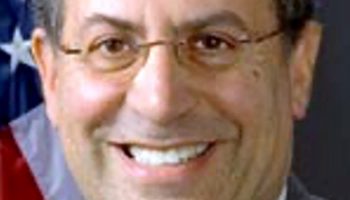Mariia Novoselia
Staff writer
Ken Blankenship, owner and lead guide of East West Birding Tours, hopes everyone has a bag of tricks up their sleeves to identify an interesting bird after attending his lecture.

The Bird, Tree & Garden Club will commence its weekly series of Brown Bag lectures with a talk about bird identification, as Blankenship will present the community with easy techniques to help distinguish between birds based on factors beyond their size and appearance.
His Brown Bag, “Bird Identification: Tricks to Improve Speed and Accuracy,” is at 12:15 p.m. today at Smith Wilkes Hall.
Blankenship said when people encounter a bird that piques their interest, most focus on what that bird looks like, foregoing other easy, objective and insightful facts.
Taking note of the time of year and the place of a bird sighting, for example, “can go a long way for those who want to improve at bird identification,” Blankenship said.
The time is important, he said, because it can give away a bird’s migration pattern.
Migration is integral to the lives of many birds native to Western New York, and Chautauqua in particular, where winters are much harsher, Blankenship said.
He said there is a “great diversity of birds in the summer,” and that these birds embark on a fascinating journey every summer flying across the whole continent.
Aside from migration and the habitat, other factors that Blankenship will cover in his lecture include bird sounds, behavior and movement, as well as foraging techniques.
Jennifer Francois, BTG vice president and program chair, said one of BTG’s driving goals is to “help people engage better with birds.” Blankenship is a very energetic lecturer, she said, who is “really excited about the topic.”
Blankenship said his interest in birds started in his backyard with bird feeders. He said he spent a lot of time outdoors growing up and soon “fell into the bottomless pit of learning.”
His passion for bird identification developed at around the same time. What hooks most birders, he said, is the multitude of birds around, in addition to the curiosity to know what they are.
Curiosity, Blankenship said, is what prompted him to travel.
“At first, you travel to the coast of the state, then another side of the country and then even abroad — there is no limit,” he said.
Traveling led Blankenship to Arizona, where he said he moved permanently in 2015 to start a business of birding tours.
“Traveling is an inspiration,” Blankenship said.
His favorite memory from Arizona, Blankenship said, is “falling in love with hummingbirds.”
He said that hummingbirds are “tiny, super colorful, and full of attitude and energy — just fascinating.”
Southeastern Arizona is home to many birds besides hummingbirds, Blankenship said; there are a lot of species that only live there and nowhere else.
Francois hopes attendees of the lecture will leave Smith Wilkes Hall being able to tell apart similar-looking or similar-sounding birds.
“Every time you go to a lecture like this, you expand (what you know) more and more,” Francois said.
Blankenship said he tries to present “in a way that is inclusive for everyone,” regardless of prior experience in bird identification.
He said people are welcome to bring their binoculars, although they are not required. Being curious about birds and wanting to learn to identify them better is all that is needed to attend.
Francois said at the beginning of Blankenship’s lecture, BTG will recognize and honor children who have completed the Champion Tree Tour with a pin.
The tour is an online scavenger hunt that can be accessed through the BTG app.




